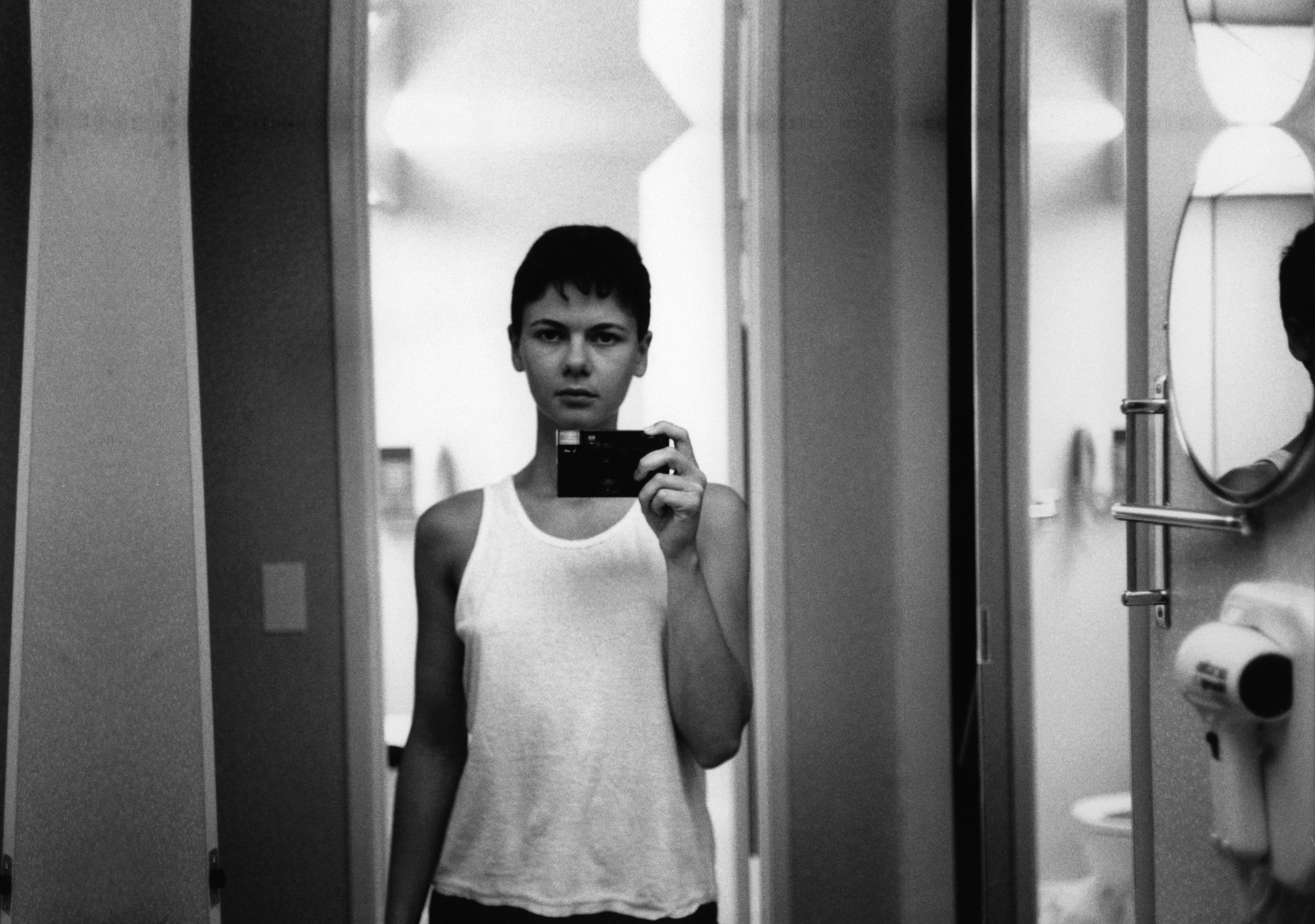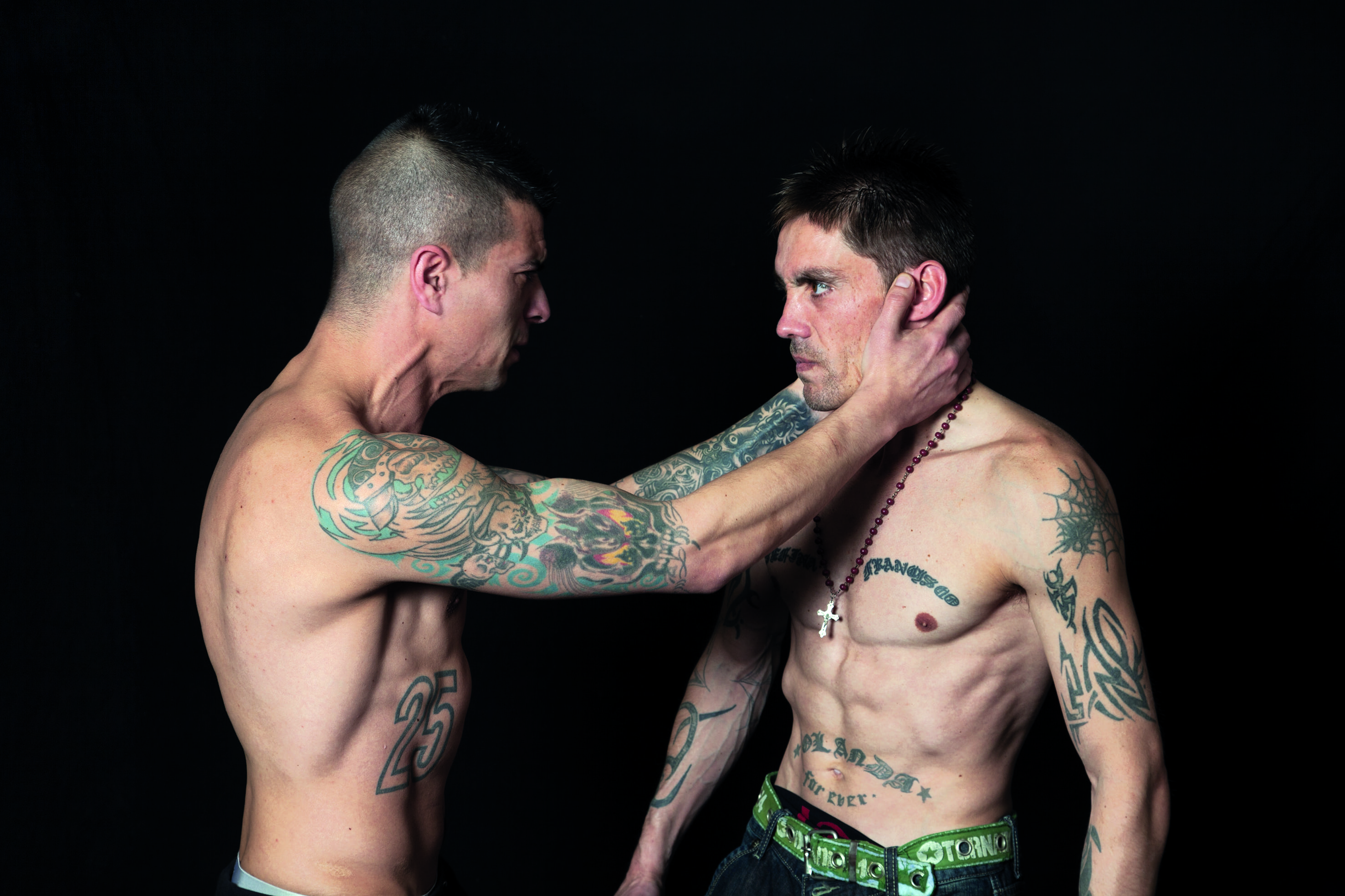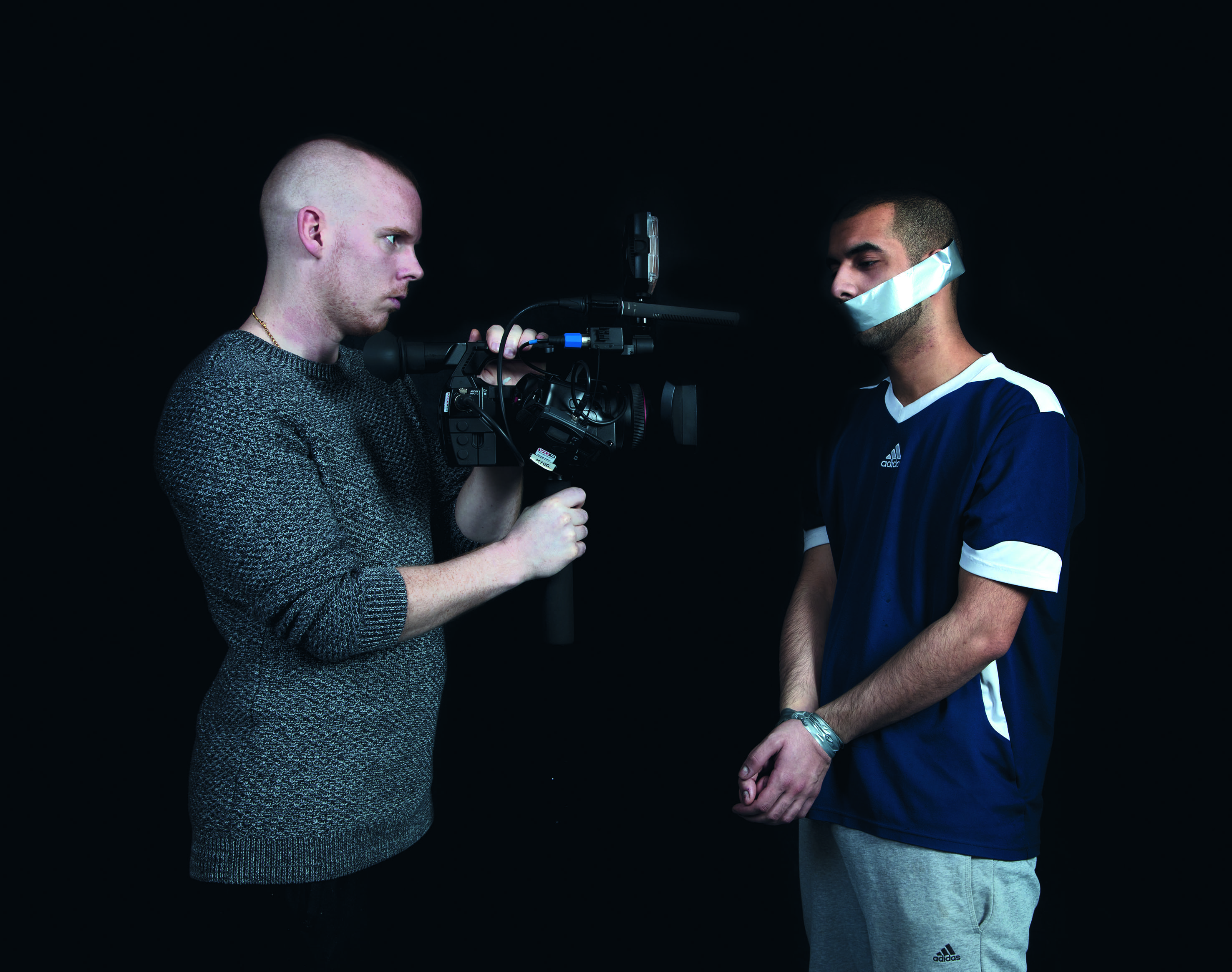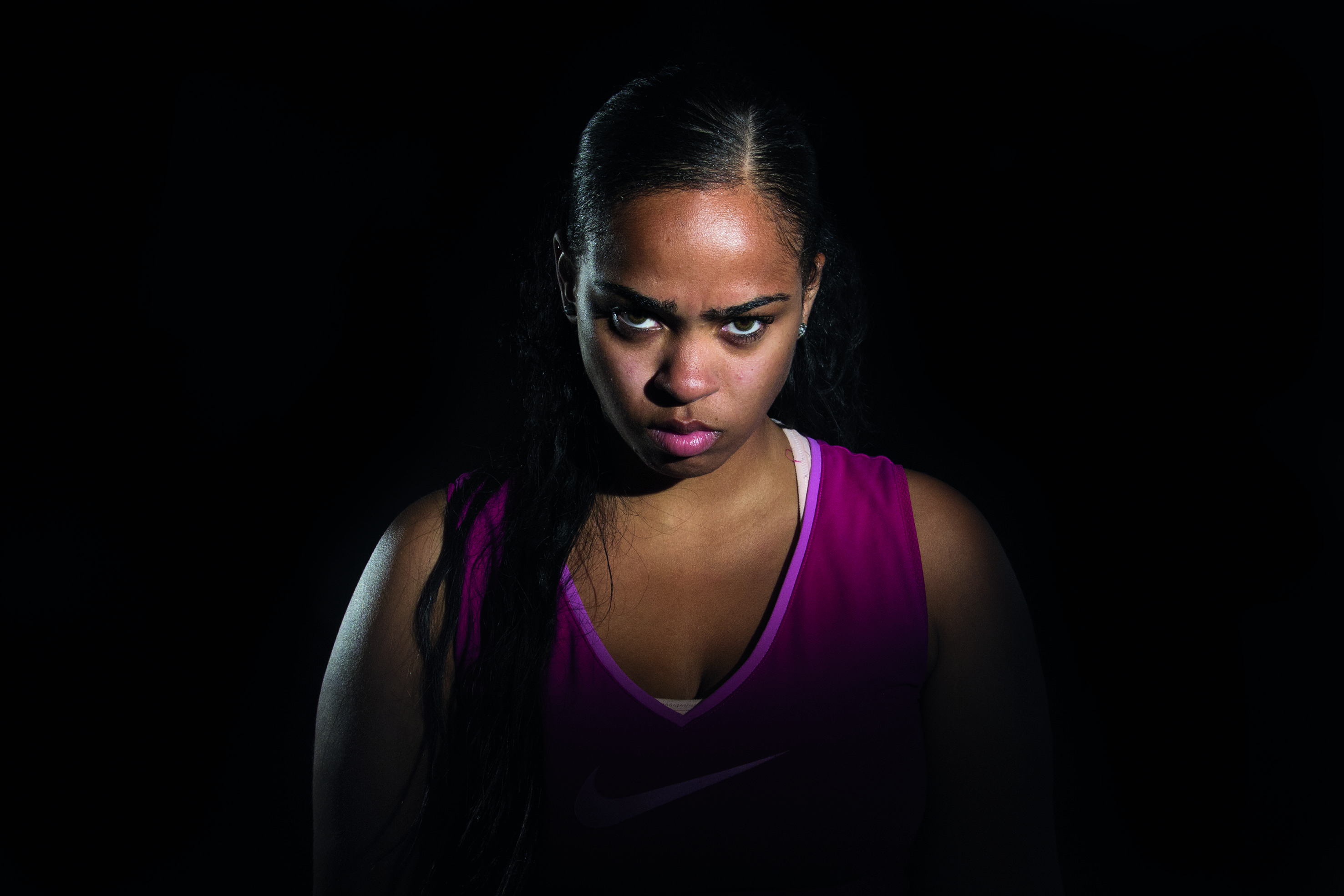Self-portrait, Self-therapy
Revisited identities with Cristina Nuñez

Cristina Nuñez found in photography the possibility of a cathartic and liberating act. This Spanish artist, a former heroin addict and prostitute, freed herself from her demons through a singular approach to self-portraiture. A method internationally acclaimed which allows a plural look at oneself and fights against social stigmas. As a social activist, she multiplies workshops to help many audiences. She will settle in Luxembourg during the events of Esch 2022: European Capital of Culture.
INTERVIEW
Sustainability MAG: You are an artist with an addictive and drifted path, could you tell us your story?
Cristina Nuñez: I was born in Catalonia into a family of the Spanish bourgeoisie. I was the fifth of six sisters and I felt invisible. My sisters were beautiful, creative and powerful, and I felt ugly and vulnerable. My parents separated, my mother fell into depression, and I felt completely invisible with a lot of anger. To get my parents' attention, I started injecting heroin until I was 20, leaving the family home. I stole, trafficked and prostituted myself to find the money to buy heroin. One day, my father saw me with a client, and that's when he sent me his ultimatum: he didn't want to see me again if I didn't stop using drugs and living this kind of life. I called my sister saying “I’m ready to quit, please help me”. I spent a year and a half at Le Patriarche’s Association in Spain, France and Belgium and I didn’t take drugs anymore. Back in Barcelona, I started psychotherapy, which I continued almost all my life.

One of Cristina Nuñez first selfportrait
How did you come up with the idea of making your first self-portrait?
In 1986, I met a Swiss photographer, and I discovered photography's power by working with him. I made my first self-portrait in 1988. I had created the look I needed towards myself. I had finally found a way to express myself completely, stimulate my creative process, and empower myself. After six years of self-portraiture, I began to photograph other people and open myself up to the world. I realised that my practice could be helpful for people. So, I created the SPEX method (The Self- Portrait Experience) which I teach worldwide in prisons, mental health centers, teen centers, museums, and to the general public.
Thus you decided to tackle social stigmas through art?
Yes, when I quitted heroin at 20, I felt the "drug addict" and "prostitute" stigmas very strongly. I felt bad, wrong: it's self-stigmatisation, when you internalise the stigma. This feeling continued over time, despite psychotherapy, until I decided to tell my story in 2004, when I started teaching self-portraiture. It was then that I was able to use my stigma to encourage others to overcome it thanks to art. To discover that identity is multiple, and the potential is enormous. Disclosure through art allowed me to be proud of my recovery and to deeply connect with other stigmatised individuals, encouraging them to do likewise.
Is it about making art accessible to everyone to fight against stereotypes?
Exactly. The photographic self-portrait triggers our unconscious creative process, and allows us to produce what I call artworks even without technical or artistic knowledge. Those who suffer, those who feel self-stigmatisation, can produce particularly powerful works, because these feelings need to be expressed and they have less mental structures than others. Carl Gustav Jung states that the unconscious is a homeostatic system in which all material must find expression and pass into consciousness, and art is the means to stimulate the unconscious to speak. We make self-portraits and work on the multiple and changing perceptions of ourselves, others and the world. This multiplicity teaches us that we are everything, that we are the union of opposites, that in our unconscious the potential is enormous. When stigmatised or suffering, people see the power of their work and discover how it can touch others' emotions and be useful to society, their self-esteem is stronger and self-stigmatisation much weaker. It is the "insurrection of subjugated knowledges" that Michel Foucault speaks of, a reversal of power roles. Our life experience in recovering from drug addiction or other stigmatised experiences makes us experts in the reconstruction of identity, change, evolution. That's why I have a research doctorate without a degree: Derby University knows that there are other ways to learn, to do research.

"In their relational self-portrait, M. and J. simulated a struggle to explore the emotions one feels in a violent situation" Cristina Nuñez.
What is unique about your approach to selfportraitureatatimewhenpeopletake pictures of themselves so often?
First, we need to talk about the difference between the "selfie" and the self-portrait according to SPEX. The selfie is mainly our public image, designed to be shared in social networks, and therefore constructed according to the image we want to project to the world. We control this image so that it meets a social norm: to be successful we must be happy and strong. So the intention is not creative, artistic. The selfie is normally produced with a mobile phone and often retouched to conform to the market’s beauty standards. The self-portrait according to SPEX is an internal image, an inner dialogue, a space where we can express everything. The intention is to produce art, to stimulate our creative process, because the self-portrait is the only possible image of the creator in the precise moment of creation. The intention is artistic because we don't control the result, we don't know what image will come out of it.
Other important points: the therapeutic aspects, or better, transformative aspects. Indeed, the self-portrait according to SPEX allows us to look at ourselves from other points of view, because often we don't recognise ourselves in the images. By looking at them, by working on multiple perceptions, we will broaden our perception of ourselves, of others and of the world. Broadening our self-perception means that everything is possible, that we can make our dreams come true, and this incredibly stenghtens us. Flexible and changing self- perception is necessary for our evolution. Also, expressing our emotions through the self-portrait allows us to move on, because emotion finds expression and is transformed into art. It is a cathartic, catalytic and liberating process. Lastly, the SPEX self-portrait promotes the reconstruction of identity. We work on the multiple perceptions of images where we do not recognise ourselves. We especially study the expressions in the two sides of the face, separately. And we begin to recognise our emotions, thoughts, experiences and values in these images. This process is reminiscent of Lacan's Mirror Stage, which is essential for the construction or reconstruction of identity. Finally, the creative process triggered by SPEX is guided by the participant's subconscious, expressing what that person needs to express, can understand and manage.

"P. and O. borrowed the camera of the TV journalist who was documenting our workshop, to stage the impossibility of expressing oneself. I think it's great that, in an emotional expression workshop, the participants want to give us this message" Crisitna Nuñez.
For your project "We Exist, self- portraits in prison", you worked with many prisoners. Why did you choose this audience?
In total I have worked with more than 400 prisoners in Spain, Italy, Switzerland and Norway, so it is a very important part of my work. I have never been in prison during my teenage, but I could have. I have a lot in common with them: drugs, crime, stigma... and rebellion. I know I can be really useful as a “Recoverist”: I tell them about mylifeandmyrecovery,Iinvitethemto express their emotions freely. I love their enthusiasm, they love to take pictures of themselves, it's fun, and they show off their tattoos and play by performing their ideal self-image, but of course it’s not only that. I have never made any tattoo myself, but I also have a rebellious aesthetic image with my head shaven. Rebellion can be positively expressed and used to change the world.
How do you evaluate the impact of Self- Portrait Experience on those people?
Since 2011, I always ask my workshop participants to fill in a questionnaire about the effects of SPEX, and I have analysed this data for my PhD, which is published in my Academia profile. First of all, 93,5% of the prison respondents asserted that the workshop allowed them to see themselves from a different point of view, that is, they broadened their perception of themselves. Secondly, over 82% of them said that the workshop allowed them to see their fellow inmates in a different way, and to discover “goodness” and other positive aspects in their peers. It’s very moving to read what prisoners expressed about the workshop. A female prisonner wrote: “I have discovered that I am courageous, I’m a fighter, I’m stronger than I thought; and that I can be someone, I can be useful, I can be a good mother.”

Self-portrait on emotional expression.
Your journey has brought you to Luxembourg, what is your objective?
In 2020, Paul di Felice, curator and professor of contemporary art I already worked with in Luxembourg, curator Carolina Lio and I created the Art as Experience association. Now we work together on the project "My Echo, My Shadow and Me" for the events of the European Capital of Culture, Esch 2022.
This social and artistic program of workshops for teenagers, public debates and an exhibition around the theme of how digital culture influences the identity of the younger generations and how we can use technological tools (e.g. cameras, smartphones and social media) as a method of investigation and understanding from the self and one's own community. The project is based on a series of SPEX workshops: In the autumn 2021, a training for professionals who follow young people, and a first full workshop for a group of motivated young people, who will be trained to become SPEX facilitators and then help us to conduct the workshops in the following year. In 2022, the groups of young people involved will mainly be migrants, people with drug issues and adolescents in high school. They work on the documentation of their lives using photography and video and will produce they autobiographical projects which will be exhibited at the Maison des Arts et des Savoirs of the University of Luxemburg, on an online exhibition and a publication. Ultimately, SPEX is an activist philosophy, against the subjection of beauty standards, for true freedom of expression and for building a society that values the authentic needs of human beings.
CRISTINA NUÑEZ
Born in 1962, Cristina Nuñez is a self-taught Spanish artist-photographer. Her approach is internationally recognised for her method, The Self-Portrait Experience (SPEX), a device for exploring one's inner life trough photographic self-portraiture. Since 2004, she has been directing SPEX workshops, already reaching more than 3,700 people, in prisons, mental health centers, drug rehabilitation centers, youth centers, schools and universities, museums, and companies. In 2020, she received the Diamand Phototherapy Award in recognition of her practice of therapeutic photography.




